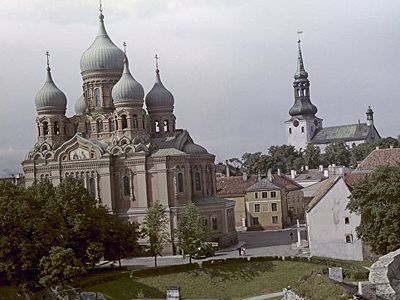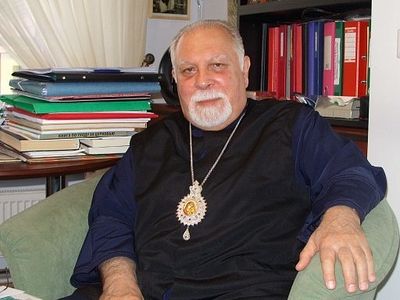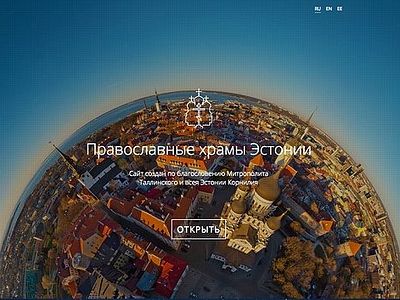Moscow, December 14, 2016
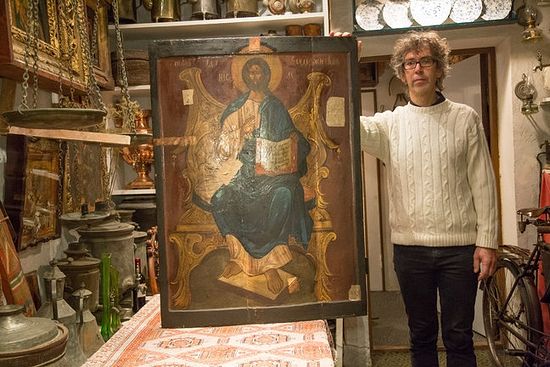 Photo: http://rus.postimees.ee/3942743/rentgen-javil-miru-starejshuju-v-jestonii-pravoslavnuju-ikonu#comments
Photo: http://rus.postimees.ee/3942743/rentgen-javil-miru-starejshuju-v-jestonii-pravoslavnuju-ikonu#comments
Extensive x-ray research has confirmed the suspicions of artist Nikolai Kormashov concerning an icon in the St. Nicholas Church in Tallinn, Estonia, reports rus.postimees.ee.
Following the 2012 death of Kormashov, who was involved in icon restoration for many years, his work is being continued by his son Orest, associate professor at Tallinn University, who is seeking to prove that under a top layer of paint hides the oldest Estonian Orthodox icon, dating to the fifteenth century.
The first task is to remove the layer of dirt that has built up over the past sixteen years, and then, more importantly, “to show the world what is hidden under a layer of paint. It’s quite possible this is one of the oldest Russian Orthodox icons of Hanseatic times, by all indications dating to the second half of the fifteenth century, making it particularly valuable,” Kormashov stated.
The fifteenth century was a time of flourishing for icon painting, and, Kormashov believes the icons of the St. Nicholas Church most likely came from Novgorod. The icon first caught the elder Kormashov’s eye, being painted in a simplified nineteenth century style while hanging on an iconostasis dating to 1686. After careful study a slight inconsistency was found in the icon, which led to the artist’s notion that there is another icon under the top layer of paint.
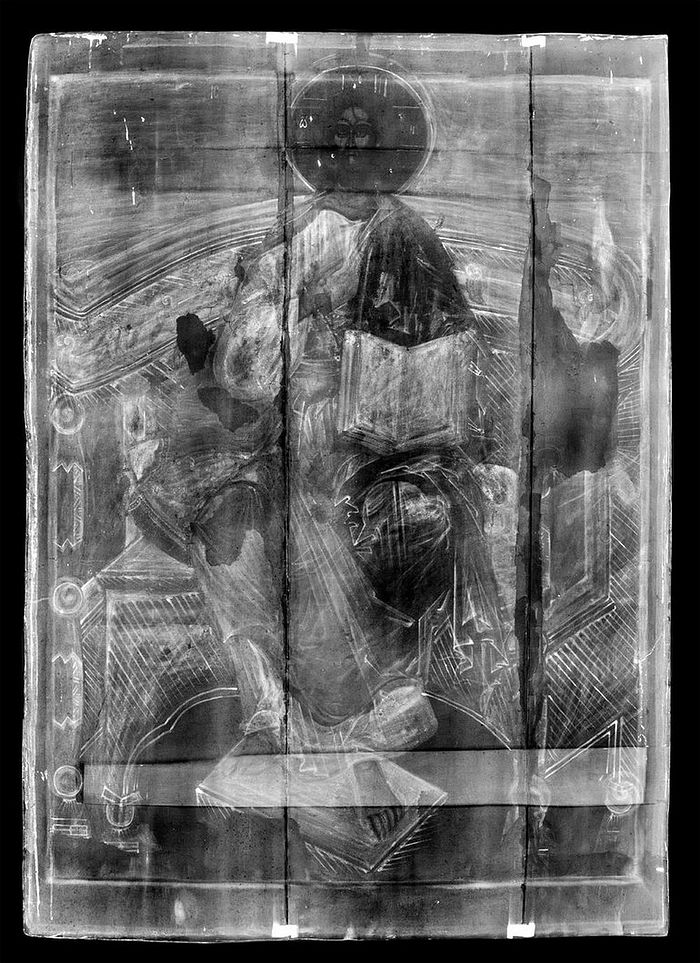 Photo: http://rus.postimees.ee/3942743/rentgen-javil-miru-starejshuju-v-jestonii-pravoslavnuju-ikonu#comments
Photo: http://rus.postimees.ee/3942743/rentgen-javil-miru-starejshuju-v-jestonii-pravoslavnuju-ikonu#comments
“Christ’s face is too small and absolutely does not match the rest of the image. Such a face of Christ is characteristic of the older style of icons, so why are there newer, inherently Baroque symbols, such as the throne and figure of Christ, around this archaic face?” asks Orest Kormashov. X-ray examinations revealed that under the top layer of paint is a well-preserved icon wholly in the classical Novgorod style.
“The old medieval icon can be seen amazingly well on the x-rays. Some very important details are visible. Originally the throne did not have a branched back, and behind it could be seen a beautiful arch. The shining hand of Christ is depicted as was done on icons mainly of the fifteenth century. The feet, standing on the stand, are too small in size if compared with the whole picture. The book which Christ is holding in His left hand has clearly visible placemarks and separate pages, which the top image does not have,” explained the artist.
Icons are used by the faithful daily and thus it is common for them to be repainted to match new artistic trends and notions of beauty, Kormashov noted.
The parish hopes to be able to move the top icon to a new board and finish the face, while the full, older icon underneath will be revealed and remain on the board dating from six hundred years ago. Kormashov estimates that the whole process will take at least 600 hours.

